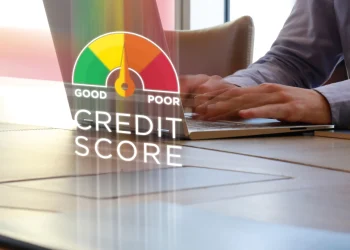Have you ever wondered what the difference between passive vs. active income is? Maybe you’ve heard the terms tossed around in conversations about building wealth, financial freedom, or side hustles. But what do they actually mean, and why does it matter?
Understanding the distinction between passive and active income is crucial for anyone looking to improve their financial health. Think of it like understanding the difference between a paycheck and a stream of income that keeps flowing even when you’re not actively working. Sound intriguing? Let’s break it all down in simple terms so you can decide which type of income aligns with your goals.
What Is Active Income?
Active income is the type of money you earn by trading your time and effort for a paycheck. Think of your typical 9-to-5 job, freelance gigs, or running a business where you’re actively involved. If you don’t show up to work, the money stops coming in.
For example, if you’re a teacher, you earn active income by teaching classes. If you’re a graphic designer, you earn active income every time you complete a project for a client. In short, active income requires your continuous effort to keep the cash flowing.
The benefit of active income is that it’s usually consistent and predictable. You know what you’ll earn in exchange for your labor, making it easy to budget and plan your finances. However, the major downside is that your earning potential is directly tied to the number of hours you work. You’re essentially trading your time for money, and there are only so many hours in a day.
What Is Passive Income?
Passive income, on the other hand, is money earned with little to no ongoing effort. It’s often referred to as “making money while you sleep.” Sounds like a dream, right? While passive income does require some upfront work or investment, the idea is that it continues to generate revenue over time without requiring constant involvement.
A few common examples of passive income include earning rental income from property, receiving royalties from a book or music, or generating money through investments like stocks and dividends. Online businesses, such as selling digital products or affiliate marketing, can also fall under the passive income category after the initial setup.
The biggest advantage of passive income is that it provides financial freedom. Once the system is in place, you can earn money without being tied to a desk or a specific schedule. However, building passive income streams often requires time, effort, and capital upfront, and it might take a while before you see significant returns.
Key Differences Between Passive vs. Active Income
The primary difference between passive vs. active income lies in the effort required to earn it. With active income, you need to put in consistent work to keep earning money. Whether it’s working a full-time job or taking on freelance projects, your income stops as soon as you stop working.
In contrast, passive income allows you to earn money with minimal ongoing effort after the initial work is done. For example, if you invest in a rental property, you’ll continue to earn income from tenants each month, even if you’re not actively managing the property daily.
Another key difference is scalability. Active income is limited by time — there are only so many hours in a day. Passive income, however, has the potential to scale without requiring more of your time. For instance, selling an online course can result in unlimited sales without additional work after the course is created.
Risk is another factor to consider. Active income is often more stable and predictable, especially if you have a steady job. Passive income, while rewarding, can involve higher risks. For example, investments can lose value, and rental properties may require unexpected maintenance costs.
Active Income Pros and Cons

When deciding between passive vs. active income, it’s essential to weigh the pros and cons of each. Let’s start with active income.
One of the biggest advantages of active income is its reliability. If you have a stable job, you know exactly how much money you’ll earn and when you’ll get paid. This predictability makes it easier to manage your day-to-day expenses and plan for the future.
On the flip side, active income has its limitations. Because it’s tied to the number of hours you work, your ability to earn is capped. Whether you’re an hourly employee or a salaried worker, burnout is a real concern if you’re constantly trading your time for money.
Passive Income Pros and Cons
Passive income has its own set of advantages and challenges. The most obvious benefit is the potential for financial freedom. Once you’ve built a successful passive income stream, you can earn money without being tied to a schedule, freeing up your time for other pursuits.
However, passive income isn’t truly “effortless.” It often requires a significant upfront investment of time, money, or both. For example, creating an online course might take weeks or months, and investing in real estate involves considerable capital and research. Additionally, passive income streams are not always guaranteed; investments can fluctuate, and businesses can fail.
Despite these challenges, the long-term benefits of passive income can outweigh the initial effort. It’s all about finding the right balance and building income streams that align with your goals and resources.
Which Is Better: Passive or Active Income?
The answer to this question depends on your financial goals, lifestyle, and risk tolerance. Active income is ideal for those who prefer stability and predictability. If you enjoy working in a structured environment and value the security of a steady paycheck, active income might be the better choice for you.
On the other hand, passive income is perfect for those seeking financial independence or looking to supplement their active income. If you’re willing to put in the upfront effort and take on some risks, passive income can provide the freedom to live life on your own terms.
For most people, the best approach is to combine both types of income. By maintaining an active income source while building passive income streams, you can enjoy the stability of a paycheck while working toward financial freedom. This hybrid strategy allows you to take advantage of the best of both worlds.
Conclusion
Understanding the difference between passive vs. active income is a critical step in building a solid financial foundation. Active income, earned through consistent effort, offers stability and predictability, while passive income, generated with minimal ongoing work, provides the potential for financial freedom and scalability.
Both types of income have their advantages and challenges, and neither is inherently “better” than the other. It all comes down to your personal goals, resources, and preferences. Whether you choose to focus on active income, passive income, or a mix of the two, the key is to create a strategy that works for you.
Start small, stay consistent, and remember that building wealth is a journey, not a race. By understanding how these income types work, you’re already one step closer to achieving your financial goals.
FAQs
1. What is the main difference between passive and active income?
Passive income requires little to no ongoing effort after the initial setup, while active income involves continuous work to earn money.
2. Can I earn both passive and active income at the same time?
Yes, many people combine both types of income. For example, you can work a full-time job (active income) while earning rental income or dividends (passive income).
3. Is passive income truly “effortless”?
Not exactly. While passive income requires less ongoing effort, it often involves significant upfront work or investment to get started.
4. Which type of income is more stable?
Active income is typically more stable and predictable, especially if you have a steady job. Passive income, while rewarding, can be less consistent.
5. How can I start building passive income?
You can start by exploring options like investing in stocks, creating digital products, renting out property, or starting an online business.













